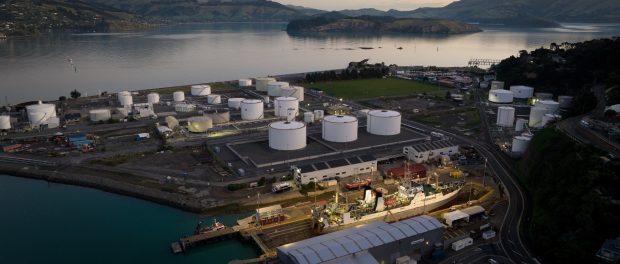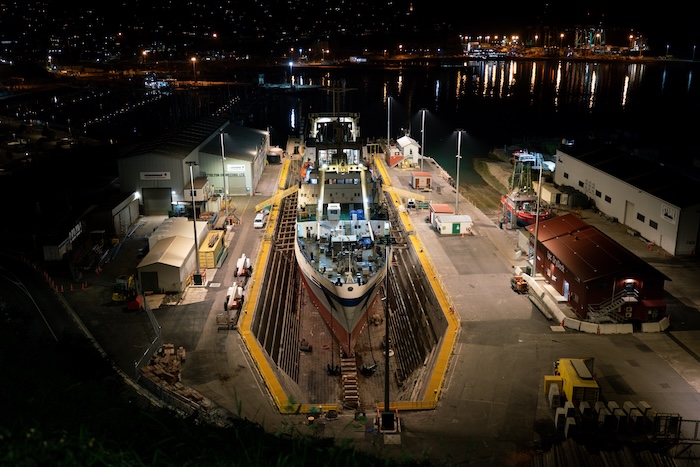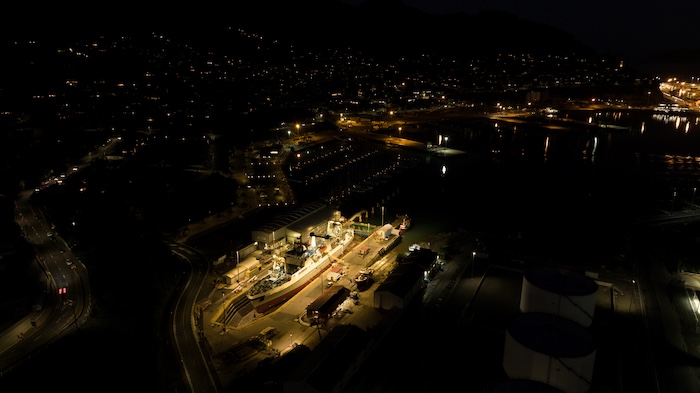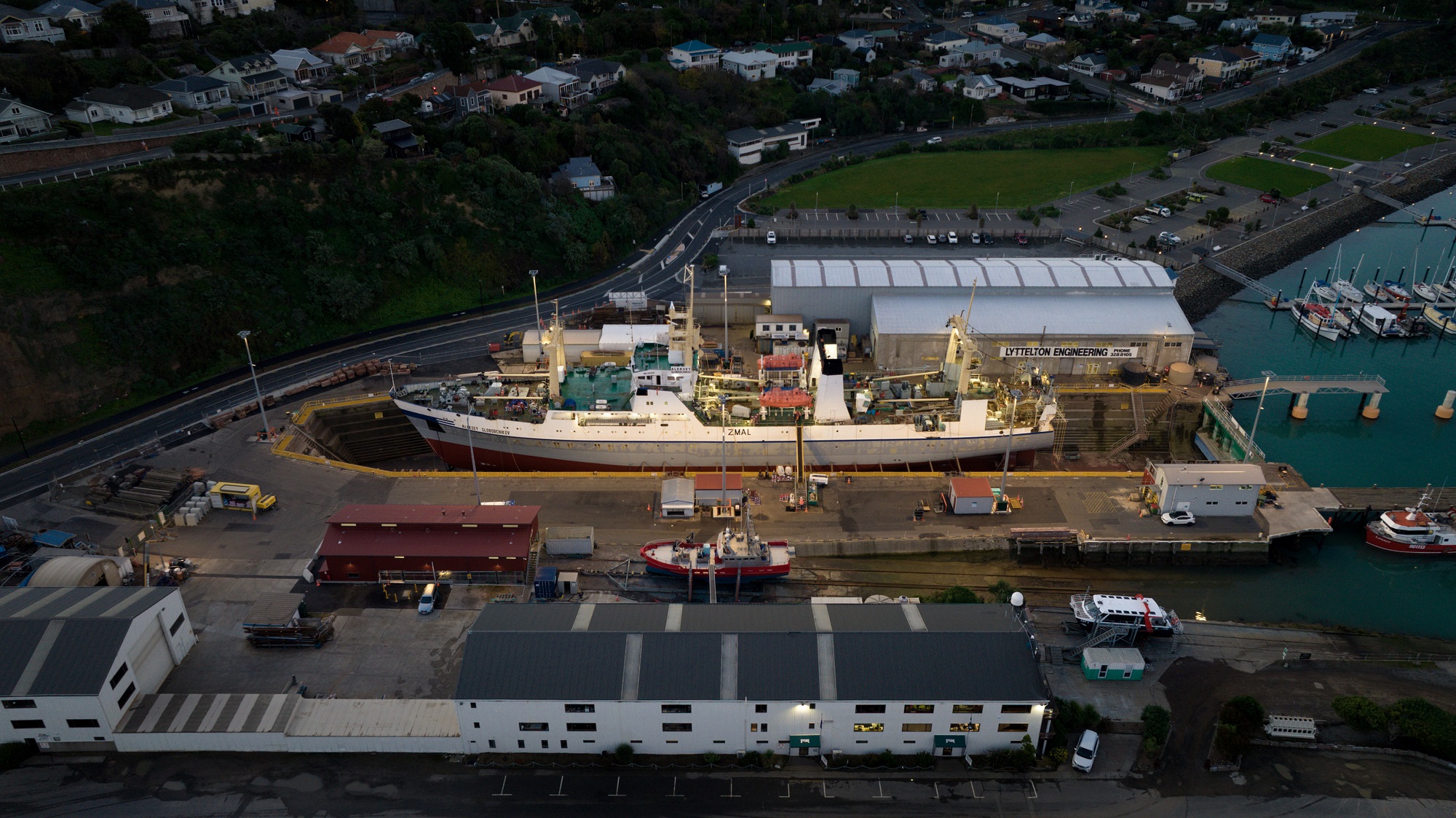Listed dry dock in New Zealand modernised with award-winning lighting solution
 ©Ian Hutchinson
©Ian Hutchinson
ewo R–System floodlights transform historic industrial facility into sustainable flagship project with DarkSky-certified lighting
The historic LPC Dry Dock at Godley Quay in Lyttelton, one of only two permanent dry docks in New Zealand, has been equipped with a pioneering lighting solution from South Tyrolean luminaire manufacturer ewo.
The industrial facility, which has been in operation since 1883, is classified as a cultural site of the highest heritage protection category. It has been given a completely new exterior lighting system with DarkSky-certified ewo R–System R2 and R4 floodlights. These not only meet the demanding industrial requirements, but also take into account heritage conservation guidelines, the protection of the night sky and marine habitats. The project has already received two national awards: the Black Sky Highly Commended Award from the Royal Astronomical Society of New Zealand and the Lighting Design Award – Highly Commended from IESANZ.
Historical substance meets modern lighting technology
The LPC Dry Dock in Lyttelton, New Zealand, on the east coast of the South Island near the famous city of Christchurch, looks back on over 140 years of history and is a key location for New Zealand’s maritime industry. In operation since 1883, the dry dock is classified as a Category 1 Heritage Site, the highest national heritage protection category. As a result, any work carried out must be respectful and comply with heritage protection regulations in order to preserve the historical substance.
After several partial modernisations, most recently following a series of earthquakes in 2010 and 2011, the outdated outdoor lighting system no longer met functional requirements. A heterogeneous mix of light sources (sodium vapour, metal halide and early LED luminaires) resulted in uneven lighting, high glare and unnecessary light emission. The operator, Lyttelton Port Company, therefore formulated clear requirements for the new lighting solution: integration into the existing system in a manner appropriate to the historic building, reduction of glare and light pollution, and protection of the marine environment. The new lighting solutions also had to withstand the extreme environmental conditions with salty air, high wind loads and constant humidity.
The concept, planned by the engineering firm Pedersen Read Consulting Engineering and implemented with distribution partner Energy Light, is based on a complete renewal of the outdoor lighting with ewo R–System floodlights of types R2 and R4. The selected colour temperature of 3000K ensures natural colour rendering, increases visual comfort and minimises atmospheric scattering. Asymmetrical precision optics with integrated backlight shielding enable precise light control. The horizontal mounting of the luminaires prevents any light emission above the horizontal plane – a key requirement for compliance with DarkSky criteria.
A Casambi lighting control system based on Bluetooth Low Energy allows flexible dimming of the luminaires for different usage scenarios: maximum brightness during maintenance or repair work, reduced brightness during night-time operation or when people are simply moving around. Control is via NEMA-based nodes installed on the mast heads. These ensure reliable communication even in the vicinity of metallic ship hulls – a special feature that has proven itself in this industrial environment.
“This project impressively demonstrates how modern lighting and control technology can be used to respectfully modernise a historic industrial facility,” explains ewo CEO Hannes Wohlgemuth. “Our R–System floodlights combine high performance with environmental protection and sustainability. The LPC Dry Dock is a flagship project for our philosophy of ’empowering wellbeing outdoors’ – even in large industrial areas, we create added value for people and the environment with well-designed lighting.”
ewo R–System floodlights are officially “DarkSky Approved”
The project benefits directly from the official “DarkSky Approved” certification of the ewo R–System luminaires used. This certification from DarkSky International confirms that the luminaires meet the highest requirements for protecting the night sky, for example, through full cut-off, spectral limitation, dimmability and strict specifications for adjustment options. This makes ewo one of the few European manufacturers whose large-area floodlights are officially certified.
The new lighting has been positively received by port employees, ship crews and local residents alike. The uniform, glare-free illumination increases safety and productivity on the dock, while light emissions and glare have been significantly reduced compared to the previous system.
Senior Project Manager Hannah Fyffe (Lyttelton Port Company) sums up the effect: “As soon as it was switched on for the first time, it was clear how big the difference was. The light is even, calm and more directional – and the entire dock feels safer and more harmonious.”
The new lighting solution not only meets all of the client’s operational requirements, but has also already received two national awards. The Royal Astronomical Society of New Zealand’s Black Sky Highly Commended Award recognises the commitment to sustainability and responsible lighting practices. In addition, the project received the Lighting Design Award – Highly Commended from the Illuminating Engineering Society of Australia and New Zealand (IESANZ), which recognises the outstanding lighting design implementation.
Special features of the ewo R–System solution for the LPC Dry Dock in New Zealand
- R–System R2 & R4 floodlights: Precise asymmetrical high-performance optics and integrated backlight shielding
- DarkSky-compliant luminaires and horizontal installation: Prevents any direct light emission above the horizontal for consistent DarkSky protection
- 3000K colour temperature: Optimised for optimal colour rendering and visual comfort
- Casambi control system: Intelligent, wireless lighting control for flexible and energy-efficient system control
- Heritage-compliant integration: Respectful implementation in historic buildings






